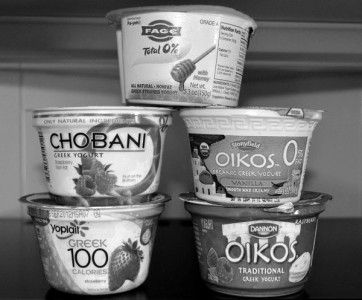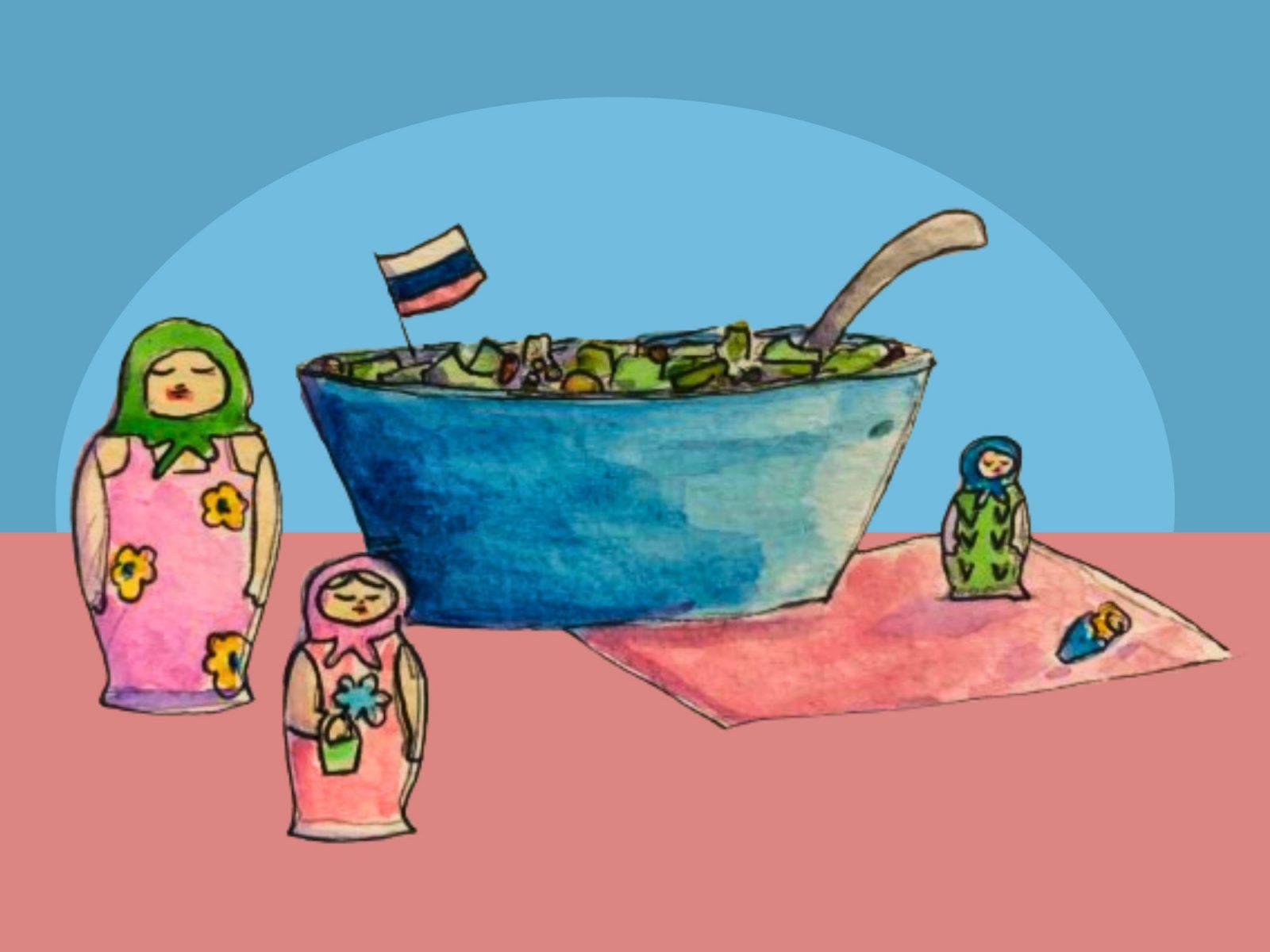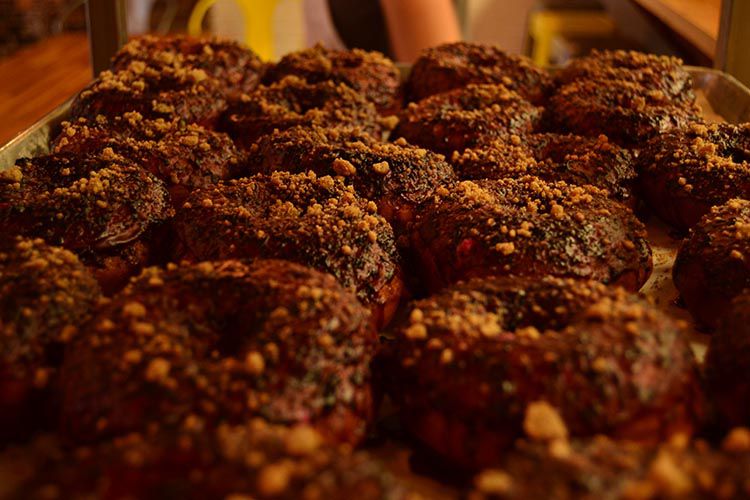As Greek yogurt becomes increasingly popular, the market has diversified, and so has consumer choice.
But as more brands of Greek yogurt break into the market, some are sacrificing authenticity for profit.
Before Greek yogurt started booming in 2007, the market share was largely divided by three main players: Fage with a massive lead, Chobani, a close second and Dannon, which manufactures both Stonyfield and Dannon Oikos, in third place.
Now the dynamics are shifting. As more brands clamor for a foothold in the market, whether by promising superiority in taste, as Dannon did in their claim that their brand “beat Chobani two-to-one in a national taste test,” or inferiority in calories, like in the case of Yoplait’s new 100-calorie Greek yogurt, shopping for Greek yogurt just isn’t so simple anymore.
That’s because when Fage dominated the Greek yogurt section of the grocery store, consumers’ options might have been minimal, but the product was dependable. What distinguishes Fage from some of its competitors is that it is fully strained Greek yogurt, using minimal additives.
Unlike regular yogurt, Greek yogurt is strained to remove the whey. The result is thick, creamy yogurt with higher protein and lower fat and lactose content than its American counterpart. But, the process of producing Greek yogurt requires huge quantities of milk, which drives up costs for companies.

Dina Clapinski, co-founder of BeFoodSmart, an educational website that examines food additives and offers advice on healthy eating, said that some manufacturers strain part of the yogurt because it takes a lot of milk to create just one container of Greek yogurt.
“It’s a lot cheaper for them to strain part of it and then add thickeners to thicken it up instead of having to use so much milk to get the finished product,” she said.
Clapinski said that common thickeners like carrageenan, locust bean gum and cornstarch “aren’t going to hurt you, but they’re not going to help you, either.”
However, there is one exception.
“Yoplait uses something called milk protein concentrate, which is somewhat of a controversial ingredient. It’s basically concentrated milk, but it’s often imported, and not very regulated,” Clapinski said. “It’s a new use for this ingredient, so there’s some controversy as to whether or not it should be used in yogurt.”
Zimmerman Reed, a Minneapolis-based law firm, Zimmerman Reed, is even suing General Mills, the manufacturer of Yoplait, according to a June 8 article in the St. Paul Business Journal.
Zimmerman Reed alleged that Yoplait is violating the Food and Drug Administration’s standard of identity for yogurt, as milk protein concentrate (MPC) is not approved for use in yogurt.
General Mills disputed the claim, and the case is still pending.
The problems surrounding MPC transcend the legal realm. Ethicurean, a website dedicated to ethical eating, states MPC can contain bacteria and somatic cells, which remain after the filtering process.
Furthermore, MPC is usually imported from countries with poor food safety standards. Since cows are not always used in the countries where MPC originates, the milk can even come from buffalo and yaks.
Ethicurean states the use of imported MPC might save food manufacturers’ money, but it hurts dairy farmers in the U.S., decreasing the demand for their milk.
On the other hand, Greek yogurt manufacturers that employ the traditional straining process, which requires three times the amount of milk than regular yogurt, have actually offered a boost to the lagging dairy industry.
The increase in Greek yogurt consumption has prevented New York dairy farmers from having to lower their prices, according to a July 9 article in Buffalo News.
While Yoplait’s newest Greek yogurt product, Greek 100, does not appear to use milk protein concentrate, there are still other brands on the shelves that do.
Cabot, Quaker Oats’ Müller brand and several grocery store brands, including Safeway’s Lucerne and Hannaford’s Taste of Inspirations, use MPC.
Fortunately for consumers, there are a lot of good brands that do not contain additives, Clapinski said.
Chobani, one of the leading companies in the Greek yogurt industry, is one of those brands.
“Chobani is Greek yogurt. It doesn’t refer to a place, it refers to a process,” said Nicki Briggs, vice president of corporate communication at Chobani, in a phone interview.
Briggs said Chobani uses more than 3 million lbs. of milk from New York state dairy farms each day before straining it.
“The yogurt we get at the end of the straining is just milk and cultures,” she said.
Dannon’s Oikos line does not use additives, either, said Senior Director of Public Relations Michael Neuwrith. “The way we make our Greek yogurt is we begin with milk and cultures, and then once the yogurt is made we strain out the whey, so we don’t use thickeners in making our Greek yogurt.”
But, according to an Oct. 26 article on BeFoodSmart, Fage is still the number-one healthiest Greek yogurt. A poll on BeFoodSmart also ranks it as the tastiest, with 30.68 percent of readers selecting Fage as the best-tasting Greek yogurt on the market.
Petros Kasfikis, a Boston University College of Communication junior and Greek native, said he agrees.
While Kasfikis said in an email that Greek yogurt in America does not compare to the yogurt in Greece, Fage comes the closest.
“I have tasted most brands of Greek yogurt in America,” he said. “Among all these types, the Fage is the only brand that comes directly from Greece, and I believe it reflects the most original flavor.”





























































































































Benny • Apr 7, 2013 at 5:04 pm
Sarah,
The easy answer is to check the ingredients on the plain yogurt. There’s no locust bean gum in plain Chobani yogurt. A lot of times when they add fruits and things there are extra additives that come in with the “fruit.”
Sarah • Mar 14, 2013 at 7:29 pm
Chobanit has “locust bean gum” listed on the ingredients. This article would lead you to believe that “locust bean gum” is an additive used to thicken the yogurt…yet they also state that Chobani does not use additives. Which is the answer?
Jackie Schmidts • Sep 12, 2012 at 12:56 pm
Somebody should ask the question, why aren’t MPCs made here in America, what is the real story behind that? MPCs are a milk concentrate. I don’t think there are enough camels, yaks or buffalos out there in other countries that could supply enough MPC here in the U.S. MPCs come from cows. Why not American cows though?
Alex Smallridge • Sep 10, 2012 at 1:46 pm
^ftw! ^_^
James Kutter • Sep 10, 2012 at 1:41 pm
It’s all greek to me!